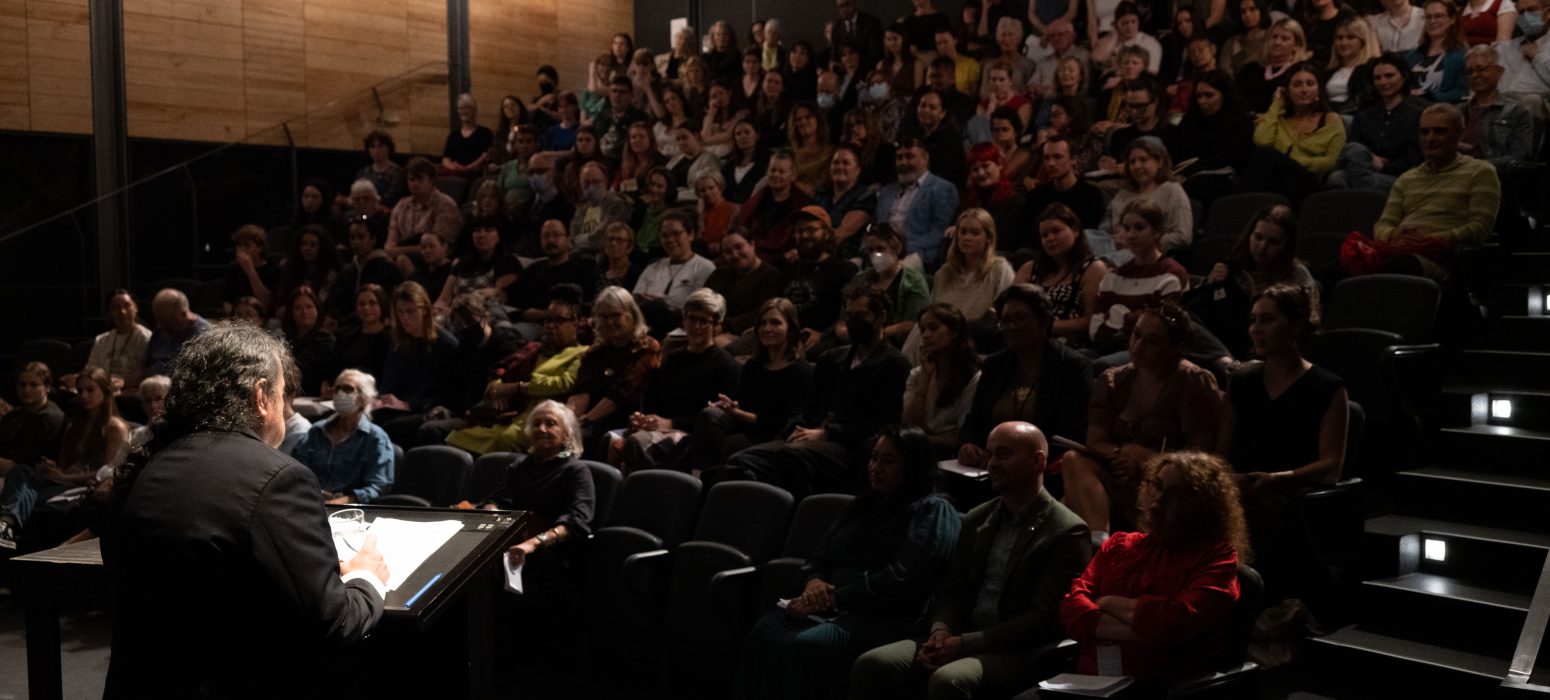
In March 2023, Smithsonian’s National Museum of the American Indian’s Paul Chaat Smith visited New Zealand on an Art in Embassies artist exchange as part of the Democracy Collection initiative. Across five days, three cities, and two islands, he spoke to a variety of groups about the contemporary landscape of Indigenous art in the United States and how that connects to similar conversations taking place in New Zealand.
His trip began in the capital city of Wellington where he toured He Tohu, the exhibit home to three iconic constitutional documents that shape New Zealand. He Tohu preserves and displays three documents from the heart of Aotearoa, or New Zealand, as a nation with Māori identity. Afterwards, he visited Te Papa, New Zealand’s National Museum, with Megan Tamati-Quennell, the curator of modern and contemporary Māori and Indigenous art. Smith later spoke at an event at City Gallery Te Whare Toi promoting Indigenous artists and curators from different galleries and museums. The day wrapped with a reception at the Residence of U.S. Ambassador to New Zealand Tom Udall. At the reception, Smith had the opportunity to engage with a variety of museum and university professionals from across New Zealand.
The next morning, Smith took part in a roundtable discussion at Te Papa, the twenty-sixth most visited art gallery in the world, with local PhD students and curators from galleries across the island before meeting with the museum’s leadership. After a more casual lunch with professors from Victoria University of Wellington, he departed for Christchurch.
In Christchurch, Smith toured Christchurch Art Gallery Te Puna o Waiwhetū with two of the gallery’s curators before taking part in a roundtable discussion with students and lecturers from the University of Canterbury, followed by a public talk and question and answer session. That afternoon, he toured a number of local galleries and visited with members of Paemanu, a Ngāi Tahu artists collective. The following day started with a brunch meeting with Carl Mika, a professor at Aotahi: School of Māori and Indigenous Studies at the University of Canterbury for a conversation around his area of study—Māori and Indigenous philosophy, specifically its revitalization within a colonized reality.
That afternoon, Smith arrived in Auckland where he gave an evening talk at the Browne School of Art to students, faculty, and Indigenous artists and curators from local galleries and museums. Here, Smith noted a particularly packed room—attendees had come to hear him speak “because friends in Christchurch or Wellington told them not to miss it.” On the last day of the exchange, he visited the Auckland Art Gallery on a tour led by Nathan Pohio, a senior curator of Māori art, followed by a visit to the Auckland War Memorial. That afternoon, Smith was greeted with a pōwhiri, a Māori ceremony that involves speeches, performances, singing, and hongi used to welcome special guests onto a marae or during other ceremonies. He spoke briefly to the assembled group before the exchange concluded with a farewell reception at the Residence of U.S. Consul General Sarah Nelson.